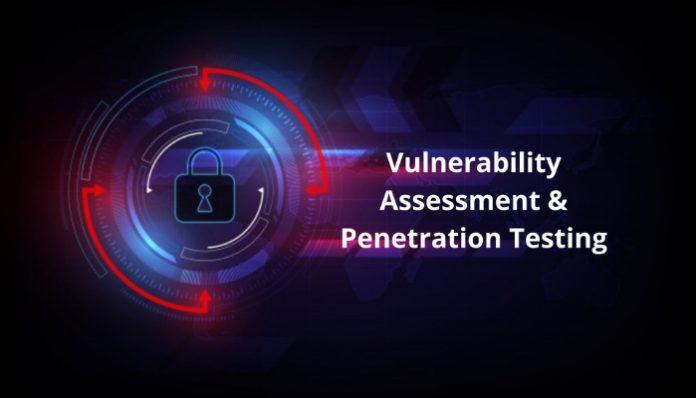The digital landscape has been severely threatened and robbed off its security with malicious cybersecurity threats. Over the years, the world has witnessed a surge in the number of cyberattacks, both in intensity and variety. The diversity these attacks bring weakens the business information thread, making it the most vulnerable to attacks and leakages. This makes them prone to an array of cyber losses over time. Hence, it is essential to regain strength with a foolproof cybersecurity strategy to work its way for your business’s health and growth.
Today, the global security and vulnerability management market size is expected to reach USD 14.45 billion in 2024; growing further at a CAGR of 7.5% only to reach USD 21.65 billion by 2029 (Mordor Intelligence). This could just be the beginning of providing a safe environment for the virtual business world! Furthermore, vulnerability assessment and Penetration testing are used quite interchangeably; leading to further discomfort for the organizations. It is imperative to gain a clear understanding of the facts; before you dive into cybersecurity as an ethical hacker or a penetration tester. Let us begin right here!
Vulnerability Assessment?
As the name suggests, Vulnerability Assessment is the sheer process of uncovering vulnerabilities in a network and recommend the appropriate mitigation or remediation to reduce or remove the risk entirely. Cybersecurity professionals utilize automated network security scanning tools to deploy vulnerability assessments securely. Types of tools used include Web application scanners that test for and simulate known attack patterns. Protocol scanners are used to search for vulnerable protocols, ports, and network services.
Penetration Testing?
Penetration Testing (PT) is a security exercise where penetration testers attempt to find and exploit vulnerabilities in a computer system with the help of targeted cybersecurity strategies. the aim of penetration testing is to identify any weak link in a system’s defense which attackers could take advantage of. These simulated attacks are undertaken in the form of social engineering techniques, sending phishing emails to access critical accounts, and using unencrypted passwords shared in the network.
Key Features
| VULNERABILITY ASSESSMENT | PENETRATION TESTING |
| Heavily relies on automated vulnerability scanning toolsAims to cover many assets with an organization’s IT infrastructure such as servers, databases, workstations, etcIs non-invasive and can identify the presence and severity of the attacksIs conducted regularly for continuous monitoring of the security landscapeOffers a high-level overview of potential vulnerabilities | Ethical hackers and skilled cybersecurity professionals conduct PT, follow predefined rules of engagement, and obtain explicit permission Caters to a specific group and targets specific systems, applications, or network segmentsGoes beyond identifying vulnerabilities to exploit them and comprehend the impactOffers a realistic picture of the impact |
Stages of Vulnerability Assessment:
- PLANNING AND ASSET DISCOVERY
Defines the scope of the assessment and outlining which systems, networks, and data will be scanned.
- VULNERABILITY SCANNING
Using automated vulnerability scanning tools for misconfigurations and outdated software versions; to compare the collected information against databases of known vulnerabilities.
- VULNERABILITY ANALYSIS AND ASSESSMENT
Analyzing the scan results, filtering false positives, and assessing the exploitability of vulnerabilities wherever possible.
- PRIORITIZATION AND REMEDIATION
Based on the seriousness of the potential impact, vulnerabilities are prioritized and streamlined for remediation.
Stages of Penetration Testing:
- PLAN
Penetration testing starts with defining the scope, including the targets to be tested, authorization levels, and testing methodologies.
- GATHER AND SCAN
Penetration testers gather information on the target systems, network architecture, and security controls for further scanning.
- IDENTIFY AND EXPLOIT
Ethical hackers identify potential weaknesses using tools that attackers commonly deploy to gain unauthorized access to systems and data.
- REPORT AND REMEDIATE
Cybersecurity professionals document their findings, highlighting the identified vulnerabilities, and exploitability, thereby recommending resolution actions.
Types
| VULNERABILITY ASSESSMENT | PENETRATION TESTING |
| Host-based scans Locates and identifies vulnerabilities in servers, and workstations by examining ports and services Network-based scans Identifies possible network security attacks by detecting vulnerable systems on wired or wireless networks Wireless network scans Focuses on the point of attack in wireless network architecture Database scans Identify weak points in a database to prevent attacks Application scans Tests websites to detect known software discrepancies and incorrect configurations | External PT Simulates attacks from an external motive, focusing on vulnerabilities exposed to the public content Internal PT Simulates attacks originating from within the network; gaining from threat actors’ authorised access Black-box Penetration testers have a limited understanding of the target system White-box They fully know the target system’s configuration and controls Gray-box They have partial knowledge of the target system |
Vulnerability Assessment vs Penetration Testing- Same or Different?
However, looking at the strategic revelations above; it is clear that these two stand on diverse standpoints. Vulnerability assessments (VA) are primarily automated tools, whereas PT is all about manual testing by skilled penetration testers. The scope of VA range across IT infrastructure assets and PT targets specific systems and applications. VA is non-intrusive whereas PT is intrusive as it attempts to exploit vulnerabilities. To understanding the core of these types of system vulnerabilities and insecurities, you as a business leader must hire experts certified in top cybersecurity training programs. You are set for a higher growth trajectory with such talent brimming with futuristic cybersecurity skills to counter the menace in the bud.
